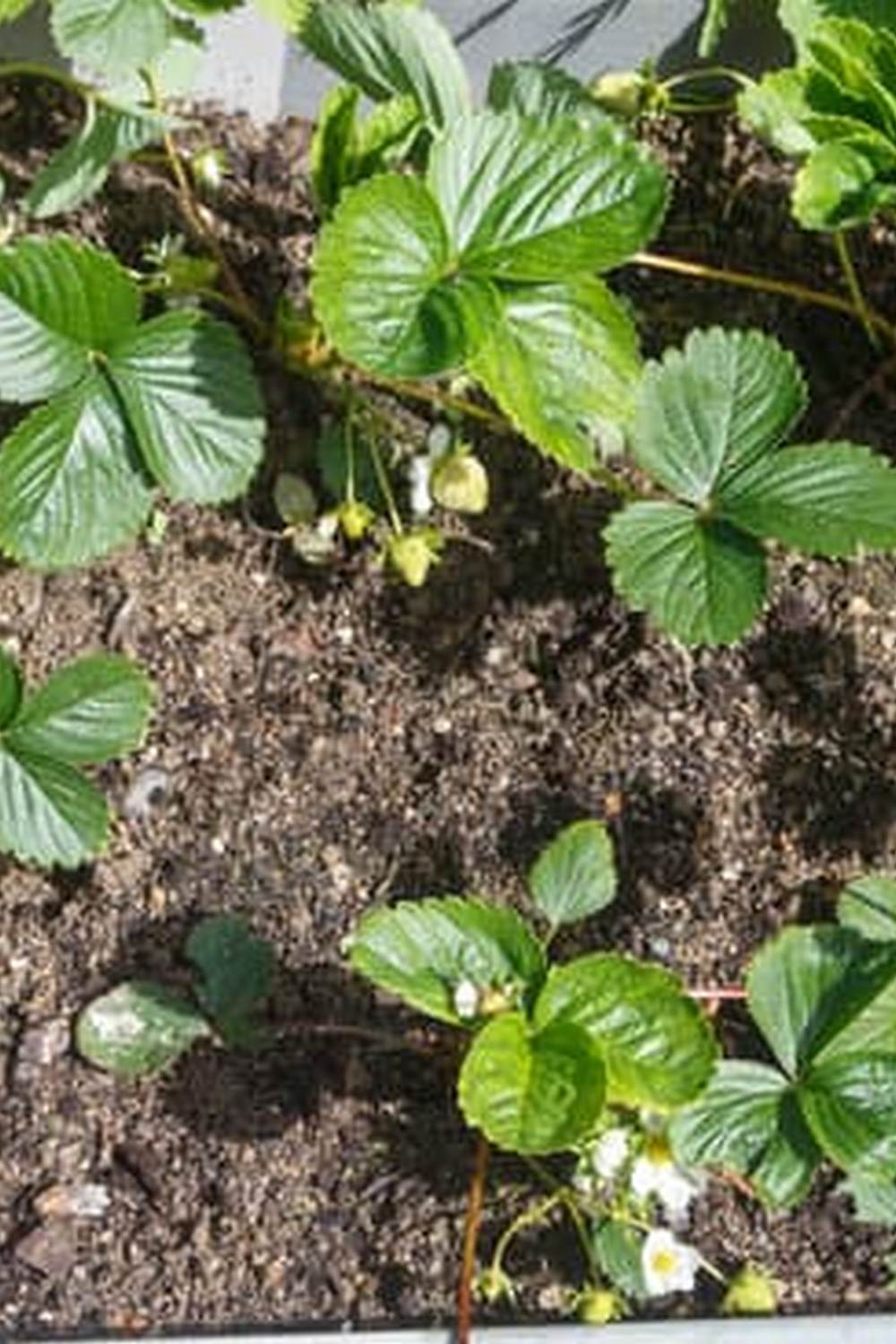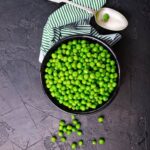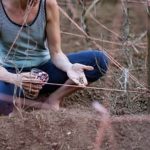Container vegetable gardening is a versatile and convenient way to grow your vegetables, especially if you have limited space or poor soil quality in your backyard. In this article, we will explore the best containers for container vegetable gardening to help you reap a bountiful harvest right from your home.
The benefits of using containers for growing vegetables are numerous. Not only do they allow you to control the growing environment, but they also offer mobility, making it easier to move your plants around to ensure they receive the optimal amount of sunlight and water. Containers also provide excellent drainage, preventing waterlogged soil that can lead to root rot.
When it comes to choosing the right containers for your vegetable garden, there are several factors to consider, such as size, material, drainage holes, and mobility. In the following sections, we will delve into these considerations and provide a detailed list of the best containers for growing different types of vegetables. Whether you prefer pots, planters, hanging baskets, or raised beds, there is a suitable option for every type of gardener.
Choosing the Right Containers
When it comes to container vegetable gardening, choosing the right containers is crucial for the success of your plants. There are several factors to consider when selecting containers, including size, material, drainage, and mobility. Here are some key points to keep in mind:
Factors to Consider When Choosing Containers:
1. Size: The size of the container will depend on the type of vegetables you plan to grow. Larger vegetables like tomatoes or peppers will require larger containers with more soil volume for their roots to spread out.
2. Material: Containers can be made from a variety of materials such as plastic, terracotta, wood, or fabric. Each material has its pros and cons in terms of durability, insulation, and aesthetics.
3. Drainage: Proper drainage is essential for preventing waterlogged soil and root rot. Make sure your containers have drainage holes at the bottom to allow excess water to escape.
4. Mobility: Consider how easily you can move your containers for sunlight exposure or protection from harsh weather conditions. Container wheels or handles can make it easier to reposition your plants as needed.
The Best Containers for Container Vegetable Gardening:
– Plastic Pots: Lightweight and affordable, plastic pots come in various sizes and colors making them versatile for different types of vegetables.
– Clay or Terracotta Pots: These traditional pots provide good airflow to plant roots but tend to dry out quickly and may require more frequent watering.
– Fabric Grow Bags: Breathable fabric containers promote healthier root systems and prevent overwatering by allowing excess moisture to evaporate.
– Wooden Planters: Durable and aesthetically pleasing, wooden planters may require additional maintenance such as sealing against moisture damage.
Selecting the best containers for container vegetable gardening will ultimately depend on your specific needs and preferences as a gardener. By considering these factors carefully, you can create an optimal growing environment for your vegetables while also adding beauty to your outdoor space.
Best Container Options
Container vegetable gardening is a fantastic way to grow your own fresh produce, even if you have limited space. When it comes to choosing the best containers for container vegetable gardening, there are several factors to take into consideration. The size of the container is crucial as it will determine how much space the plant’s root system has to grow.
Additionally, the material of the container is important for insulation and drainage. Containers made of plastic or wood are common choices because they are lightweight and retain moisture well.
Among the best containers for container vegetable gardening are pots, planters, hanging baskets, and raised beds. Pots are versatile and come in various sizes, making them suitable for a wide range of vegetables such as herbs or cherry tomatoes. Planters offer more depth for vegetables with deeper root systems like carrots or radishes. Hanging baskets are perfect for trailing plants like strawberries or cucumbers, while raised beds provide ample space for sprawling plants such as zucchini or pumpkins.
Choosing the right containers based on the type of vegetables you want to grow is essential for a successful harvest. For example, tomatoes thrive in large pots with support cages, while lettuce can be grown in shallow planters.
Understanding the specific needs of each vegetable variety will help you select the best containers that promote healthy growth and abundant yields. Overall, investing in high-quality containers suited to your chosen vegetables will set you up for a bountiful container vegetable garden season after season.
| Container Type | Suitable Vegetables |
|---|---|
| Pots | Herbs, Cherry Tomatoes |
| Planters | Carrots, Radishes |
| Hanging Baskets | Strawberries, Cucumbers |
| Raised Beds | Zucchini, Pumpkins |
Container Preparation
When it comes to container vegetable gardening, proper preparation of the containers is essential for the success of your plants. By taking the time to clean, sterilize, and add the right soil mixtures, you can create an optimal environment for your vegetables to thrive. Here are some tips on preparing your containers for planting:
Cleaning Containers
Before planting any vegetables in your containers, it’s important to clean them thoroughly. Use a mild soap and water solution to scrub away any dirt or residue that may be left over from previous plantings. Rinse the containers well and allow them to dry completely before adding any soil or plants. This process helps prevent the spread of diseases and ensures a healthy growing environment for your vegetables.
Sterilizing Containers
In addition to cleaning, sterilizing your containers can further reduce the risk of disease and pests affecting your vegetable plants. You can sterilize containers by soaking them in a solution of one part bleach to nine parts water for about 10-15 minutes. Rinse the containers well with clean water after sterilizing to remove any bleach residue. This step is especially important if you are reusing containers from past seasons or if you suspect any issues with soil-borne pathogens.
Adding Proper Soil Mixtures
Choosing the right soil mix is crucial for container vegetable gardening. A high-quality potting mix that is well-draining and nutrient-rich is essential for healthy plant growth. Avoid using regular garden soil, as it may compact in containers and hinder root development.
Look for a potting mix specifically formulated for container gardening or consider creating your own blend using components like peat moss, perlite, and compost. Remember to fill your containers with enough soil mixture, leaving some space at the top for watering ease. With the right soil mix, your container vegetables will have a solid foundation for flourishing throughout the growing season.
Vegetable Selection
When it comes to container vegetable gardening, choosing the right vegetables to grow is crucial for success. Not all vegetables thrive in containers, so selecting ones that are well-suited for limited space and the conditions of a container environment is essential. Some of the best vegetables to grow in containers include tomatoes, peppers, lettuce, herbs, radishes, and cucumbers.
Tomatoes
Tomatoes are a popular choice for container gardening due to their versatility and bountiful harvests. Compact or determinate varieties like patio tomatoes or cherry tomatoes are ideal for containers as they take up less space and produce fruit earlier than indeterminate varieties. Make sure to provide adequate support for tomato plants in containers and regularly fertilize them for healthy growth.
Peppers
Peppers also do well in containers, especially smaller varieties like bell peppers or spicy jalapenos. These plants thrive in warm temperatures and require consistent watering to avoid issues like blossom end rot. Choose large enough containers to accommodate the root system of pepper plants and ensure proper drainage to prevent waterlogged soil.
Lettuce
Lettuce is a fantastic option for beginner container gardeners as it is easy to grow and doesn’t require much space. Leaf lettuces like butterhead, romaine, or loose-leaf varieties can be continuously harvested by picking outer leaves while allowing the plant to keep growing. Plant lettuce seeds or seedlings in shallow but wide containers with good drainage to prevent root rot issues from overwatering.
By selecting the best vegetables suited for container gardening and following proper care techniques, you can enjoy a bountiful harvest of fresh produce right at your fingertips. Experiment with different vegetables and discover which ones thrive in your specific container environment to create a flourishing mini-garden on your balcony, patio, or even windowsill.
Planting and Maintenance
Planting and maintaining vegetables in containers is a crucial aspect of successful container vegetable gardening. To ensure the health and productivity of your plants, follow these step-by-step instructions.
First, choose a container that is suitable for the specific vegetables you want to grow. Select containers that are large enough to accommodate the roots of mature plants, have proper drainage holes to prevent waterlogging, and are made of high-quality materials like terracotta or resin to provide insulation for the roots. Hanging baskets are great for vining plants like tomatoes or cucumbers, while shallow planters work well for herbs and leafy greens.
Next, fill your chosen containers with a well-draining potting mix that is rich in nutrients. Avoid using garden soil as it may compact too tightly in containers. Plant seeds or seedlings according to the spacing recommendations on their packets or tags. Water thoroughly after planting to settle the soil around the roots.
Regular watering is essential for container-grown vegetables since they dry out faster than those planted directly in the ground. Check the moisture level of the soil regularly by sticking your finger into the top inch – if it feels dry, it’s time to water.
Fertilize your container vegetables with a balanced liquid fertilizer every two weeks or use slow-release granular fertilizer following package instructions. Monitor plant growth for any signs of pests, diseases, or nutrient deficiencies to address them promptly.
| Aspect | Recommendation |
|---|---|
| Container Size | Choose containers large enough for mature plants |
| Drainage | Select containers with adequate drainage holes |
| Soil Mix | Use well-draining potting mix rich in nutrients |
Common Container Gardening Mistakes
When it comes to container vegetable gardening, there are some common mistakes that can hinder the success of your garden. Avoiding these mistakes will help ensure healthy and bountiful yields from your container vegetables. Here are some of the most common container gardening mistakes to watch out for:
- Overwatering: One of the most frequent mistakes in container gardening is overwatering. While it’s essential to keep your plants hydrated, too much water can lead to root rot and other issues. Be sure to check the moisture level of the soil before watering and ensure that your containers have proper drainage holes.
- Using the Wrong Containers: Choosing the right containers is crucial for successful container gardening. Some materials, such as plastic or ceramic, may not provide adequate airflow to the roots, while others may leach harmful chemicals into the soil. Opt for containers made from breathable materials like terracotta or fabric bags, which allow for better air circulation.
- Neglecting Plant Care: Just like traditional garden plants, container vegetables require regular care and maintenance. Neglecting to fertilize, prune, or monitor for pests and diseases can result in stunted growth and poor fruit production. Make sure to follow a regular watering schedule, feed your plants with a balanced fertilizer, and keep an eye out for any signs of trouble.
By avoiding these common container gardening mistakes, you’ll be on your way to a successful harvest of fresh and delicious vegetables grown right on your doorstep. Remember to pay attention to your plants’ needs, choose the best containers for container vegetable gardening wisely, and enjoy the process of watching your garden thrive.
Seasonal Care
Container vegetable gardening is a convenient and rewarding way to grow your own fresh produce, even if you have limited space or poor soil quality. Choosing the right containers is crucial for successful vegetable gardening, considering factors like size, material, drainage, and mobility. The best containers for container vegetable gardening include pots, planters, hanging baskets, and raised beds, each offering unique benefits depending on the type of vegetables you plan to grow.
Once you have selected the appropriate containers for your vegetable garden, it is essential to properly prepare them before planting. Cleaning and sterilizing the containers, as well as adding a suitable soil mixture, will create an optimal environment for your plants to thrive. When it comes to selecting which vegetables to grow in containers, consider space constraints and growth habits to maximize productivity. Some of the best vegetables for container gardening include tomatoes, peppers, herbs, lettuce, carrots, and radishes.
To ensure the health and productivity of your container vegetables throughout the growing season, follow proper planting and maintenance practices. Whether planting seeds or seedlings in containers, remember to water consistently, fertilize as needed, and monitor plant growth regularly.
Avoid common container gardening mistakes like overwatering or neglecting plant care to prevent issues that can impact your harvest. Lastly, seasonal care is crucial for maintaining healthy container vegetables year-round; pruning, harvesting at the right time, and preparing containers for the next planting season are all key steps in ensuring long-term success in container vegetable gardening.
Frequently Asked Questions
What Is the Best Container Mix for Vegetables?
The best container mix for vegetables should be well-draining, nutrient-rich, and have a good balance of moisture retention. A popular option is a mix of peat moss, perlite, and compost to provide the right environment for healthy vegetable growth.
What Do You Put in the Bottom of a Vegetable Container?
When it comes to filling the bottom of a vegetable container, it is essential to prioritize drainage to prevent waterlogging and root rot. One effective method is placing a layer of small stones or broken pottery pieces at the bottom before adding the potting mix. This helps excess water drain away efficiently while still allowing air circulation.
What Containers Are Safe to Grow Vegetables In?
Choosing safe containers to grow vegetables in is crucial to prevent any harmful chemicals from leaching into the soil and affecting the plants. Non-toxic options include ceramic pots, untreated wooden crates or barrels, food-grade plastic containers labeled with recycling codes #2 (HDPE), #4 (LDPE), or #5 (PP), as well as galvanized metal containers lined with a protective barrier like plastic sheets.
Always make sure the container is clean before planting your vegetables to avoid contamination risks.

If you’re looking to get into vegetable gardening, or are just looking for some tips on how to make your current garden better, then you’ve come to the right place! My name is Ethel and I have been gardening for years. In this blog, I’m going to share with you some of my best tips on how to create a successful vegetable garden.





